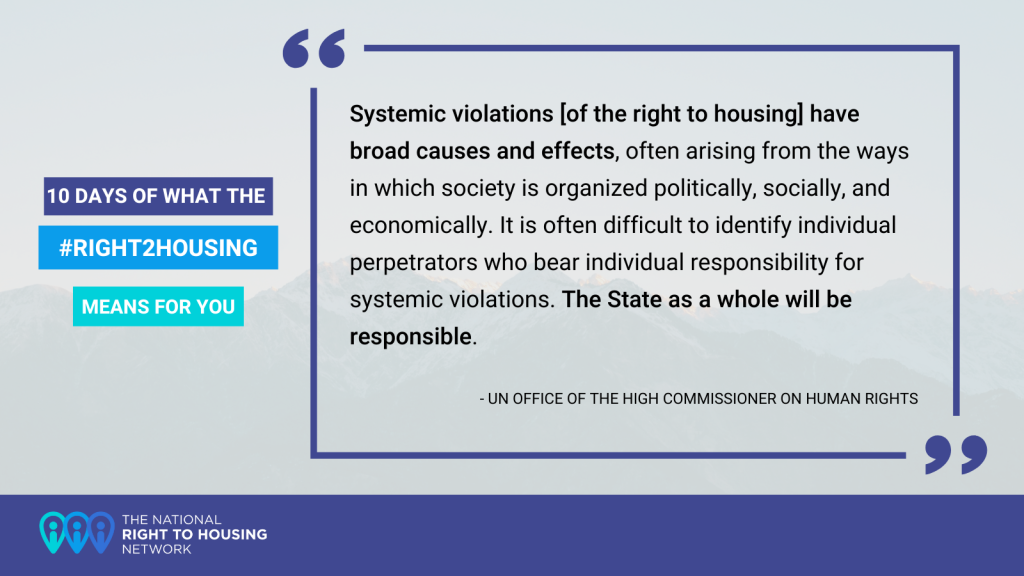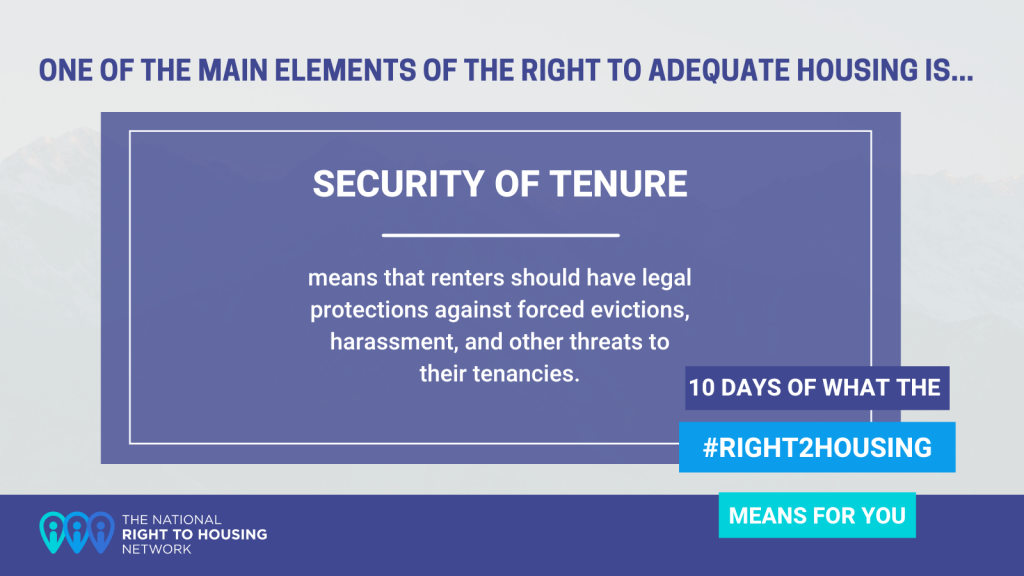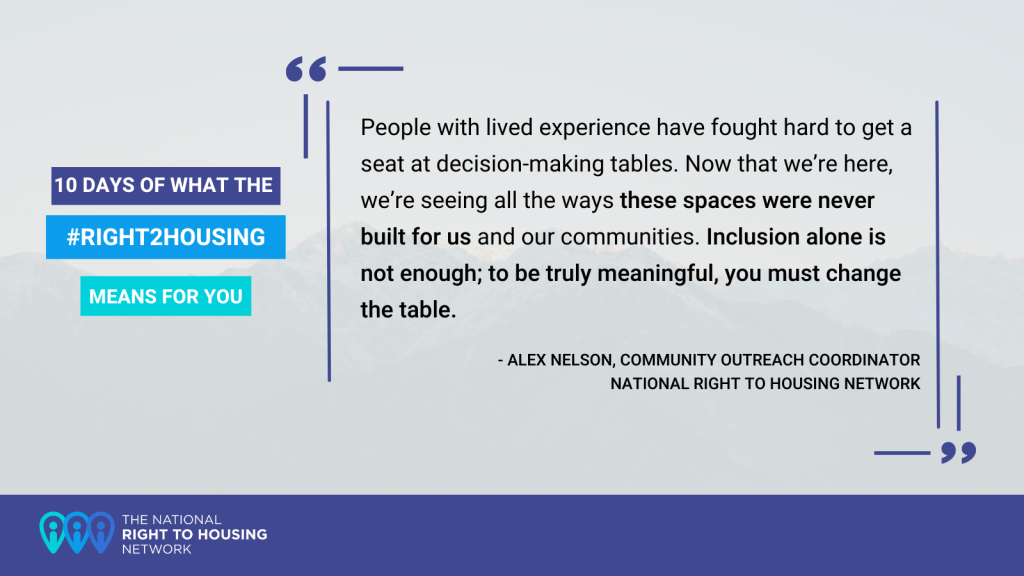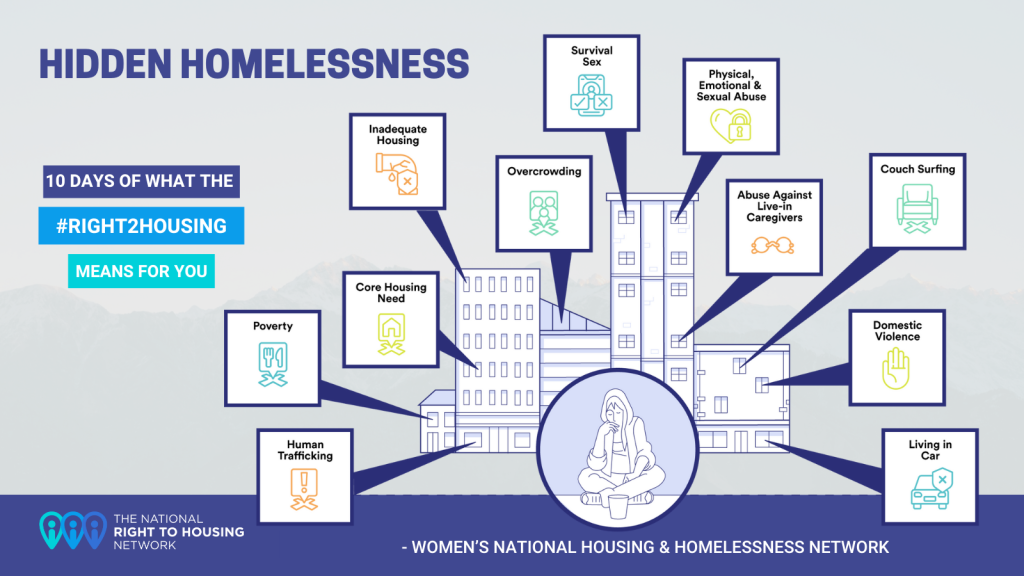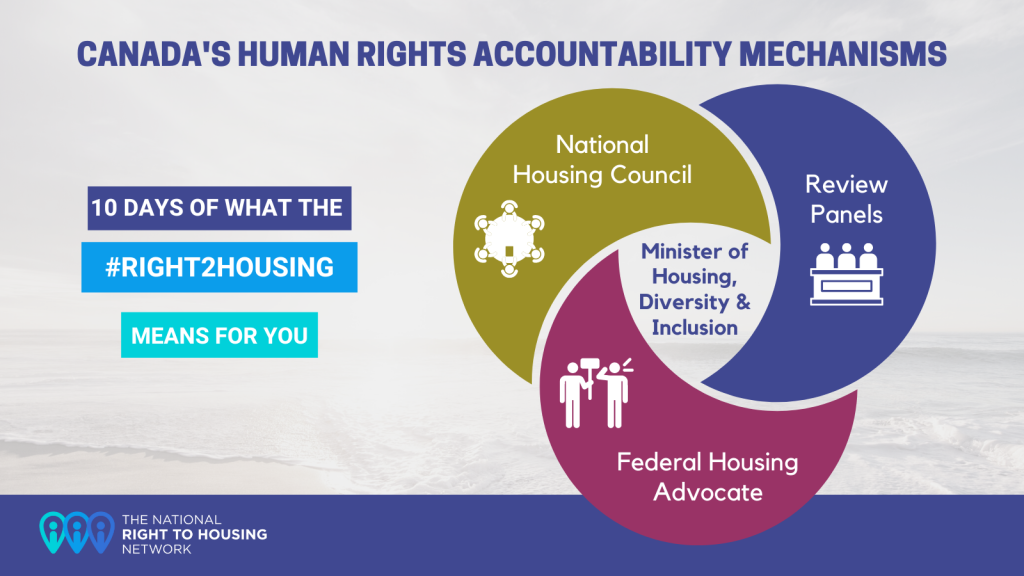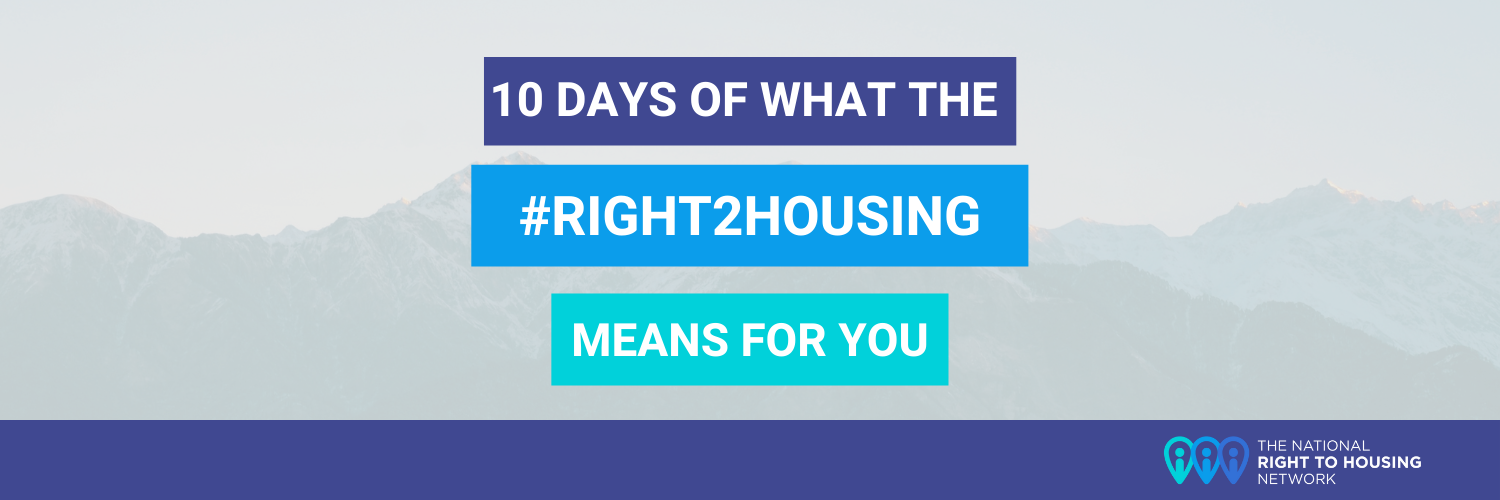
With the appointment of Canada’s inaugural Federal Housing Advocate, the National Right to Housing Network launched a 10-day social media campaign on what the #right2housing means for you.
During these 10 days, we broke down the key components of what is considered adequate housing, some of the systemic barriers that directly impact individuals and groups that are already marginalized, and provided resources such as webinars, reports, and more!
campaign overview
Day One – What systemic barriers are you facing?
Today, in honour of the federal housing advocate’s appointment, we’re launching a 10-day campaign on what the #right2housing means for you. We want to begin by asking:
What housing-related systemic barriers are you facing?
Check out the answers to our poll on:
Twitter // Facebook // LinkedIn
Day Two – What is considered adequate housing?
 The #right2housing goes beyond ensuring that people have access to four walls and a roof. It requires legal protections, taxation measures, regulating financial actors, and more.
The #right2housing goes beyond ensuring that people have access to four walls and a roof. It requires legal protections, taxation measures, regulating financial actors, and more.
Read the Network’s analysis of what the right to housing means on page 3 of our literature review.
Day Three – The arrears and evictions crisis
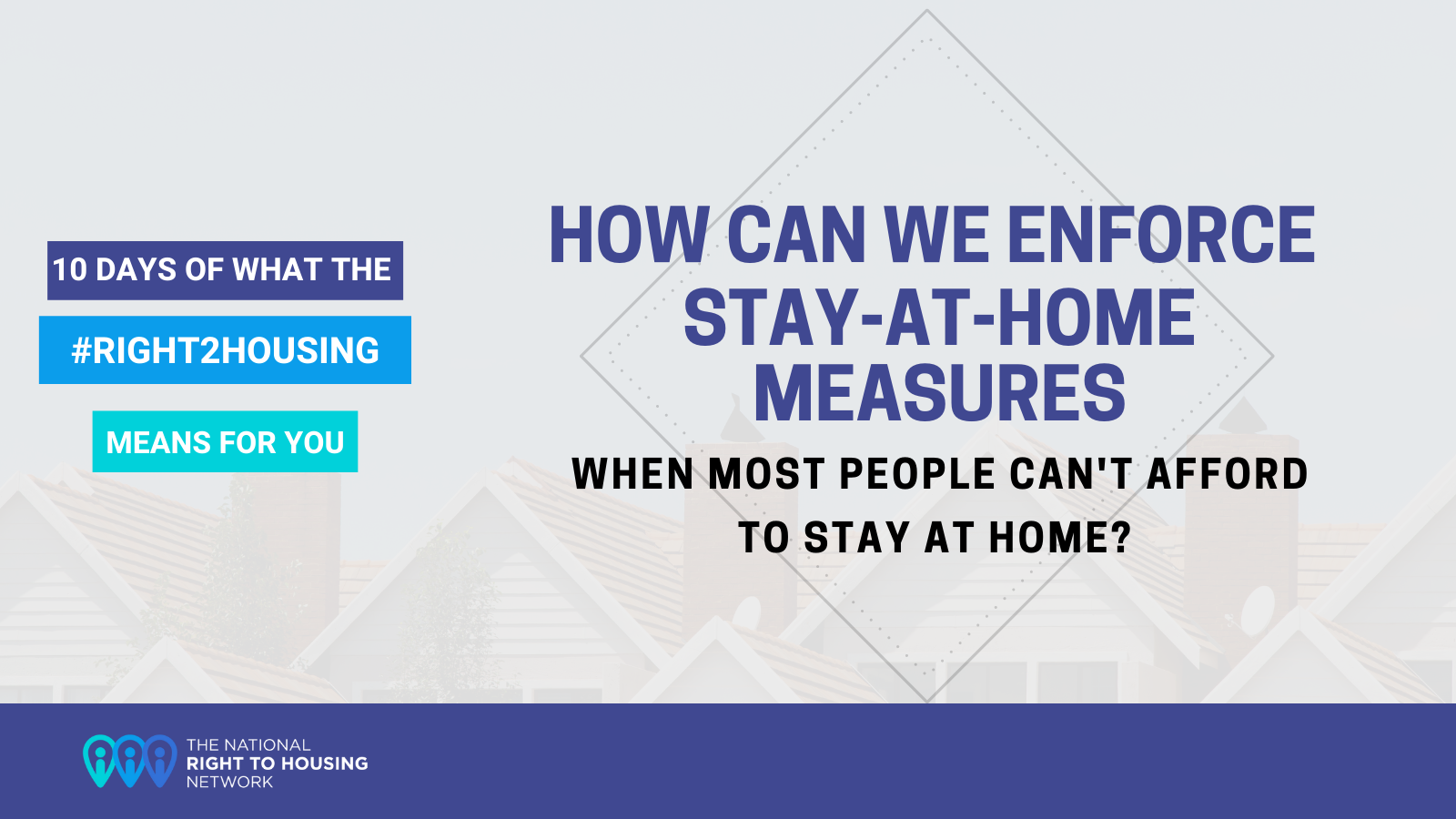 Without CERB helping Canadians stay afloat during the pandemic, more people are being driven into inadequate housing and homelessness.
Without CERB helping Canadians stay afloat during the pandemic, more people are being driven into inadequate housing and homelessness.
Day Four – A need for accessible housing
Day Five – Security of tenure
No eviction should be permitted where it would result in a violation of the #right2housing, which means that no one should be evicted into homelessness.
Check out these rights-based tenant resources for each province and territory.
Day Six – The financialization of housing
Addressing the financialization of housing in Canada means revamping ineffective programs and policies to ensure permanent affordability and adequacy.
Day Seven – The importance of centering lived experience
People with lived experience of housing need must be able to participate in housing policies, programs, and decision-making that affects them.
Day Eight – Hidden Homelessness
Diverse women and women-led families in Canada experience disproportionate levels of core housing need and poverty. The result is widespread violations of the #right2housing that are profoundly gendered.
Day Nine – Systemic housing barriers for Indigenous Peoples

Day Ten – Canada’s Human Rights Accountability Mechanisms
With the Federal Housing Advocate’s appointment, all of Canada’s human rights mechanisms are in place to ensure that we meet our #right2housing obligations. Now it’s time for action!


